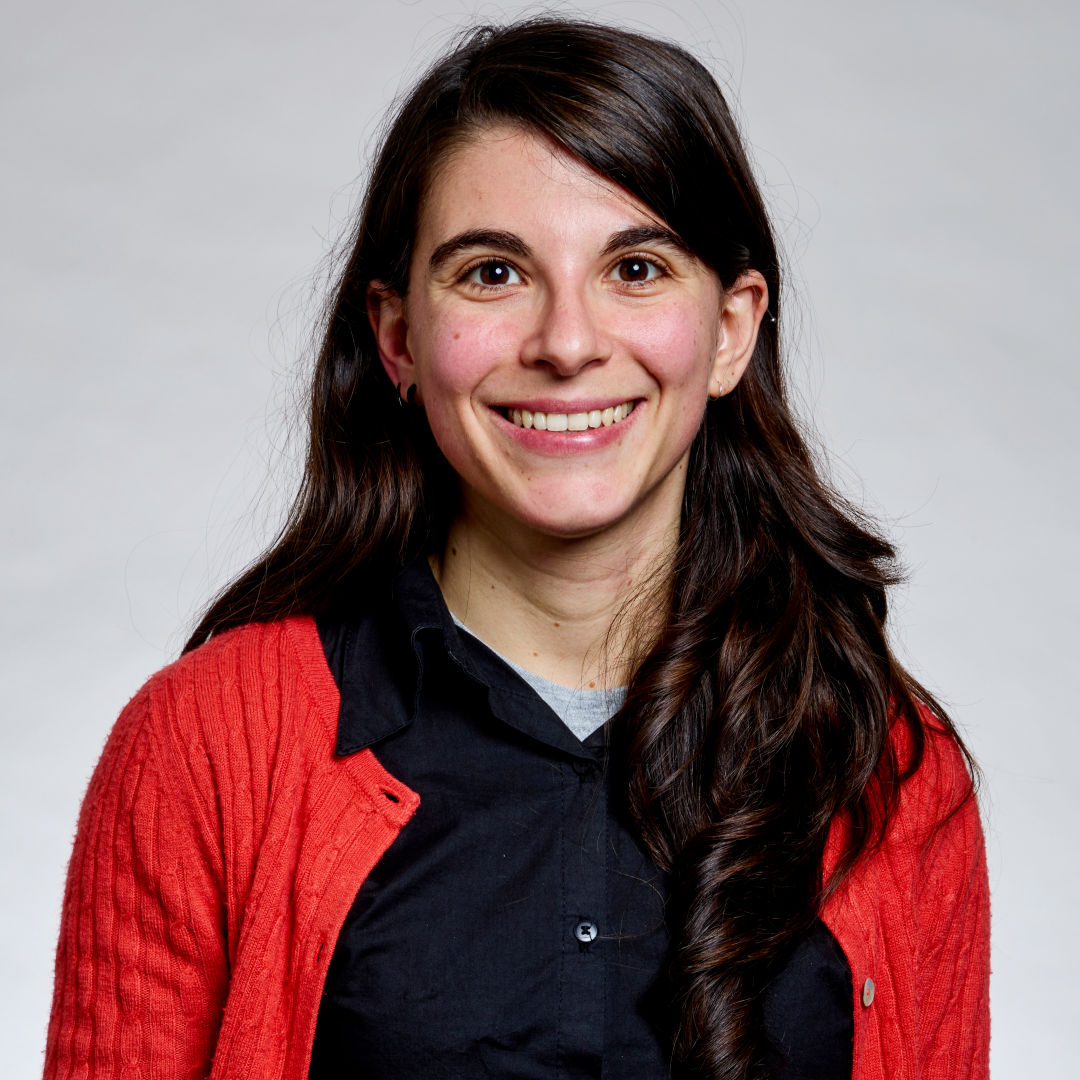Research
The general goal of my current research is to understand binary star evolution. About a third of stars are in binaries, and there are many open issues regarding their interaction. The physical processes that govern binary evolution are of general importance in astrophysics, having impact from planetary to extragalactic research. In my work, I identify and characterise systems resulting from binary evolution, providing constraints to improve theoretical models. This includes searching for potential gravitational wave sources that could serve as verification systems for the upcoming space-based detector LISA, and for potential supernova Ia progenitors that could help us better understand the mechanism behind these important standard candles, which led to the discovery of the expansion of the Universe. I am also particularly interested in extremely-low-mass white dwarfs and hot subdwarfs, whose existence can only be explained by binary evolution. Better characterisation of these systems can provide constraints to evolutionary and population synthesis models to help improve our understanding of the physics of binary evolution.
Below there is a summary of different research topics I am currently working or have worked on. You can check my complete and updated list of publications, as well as metrics, on my public ADS library.
Compact binaries: SN Ia progenitors and gravitational wave sources
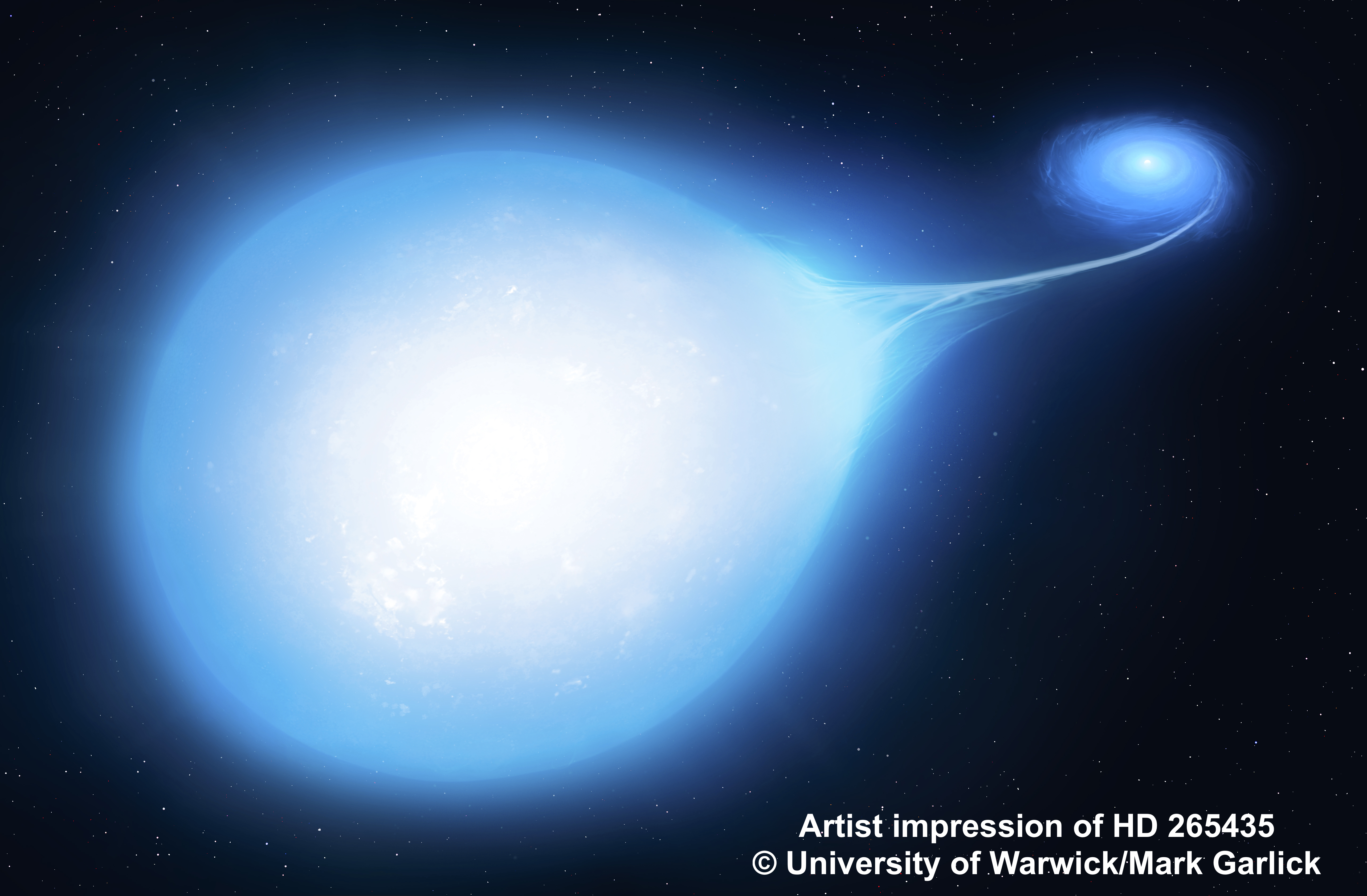
White dwarfs in compact binaries systems, with periods shorter than 1-2 hours, can be SN Ia progenitors and strong gravitational wave sources. To find these systems, my team and I have been taking advantage of photometric and spectroscopic surveys. To find them through photometry, I am a co-lead of the TESS working group 8.4, which studies binary stars in which at least one of the components is a white dwarf or a subdwarf. Among my main findings is the star HD265435, which is a candidate supernova Ia progenitor and a gravitational wave source strong enough to be detected by LISA. You can read more about it in the Warwick press release. We are now using BlackGEM to search for other massive binaries. To find binaries with spectroscopy, we are taking advantage of the multiple large spectroscopic surveys that are now or soon operating: DESI, SDSS, LAMOST, 4MOST, and WEAVE.
Related works: arXiv:2504.04522, arXiv:2308.00036, arXiv:2302.12507, arXiv:2207.02001, arXiv:2009.02968, arXiv:2107.09074
White dwarf pulsars and magnetic cataclysmic variables
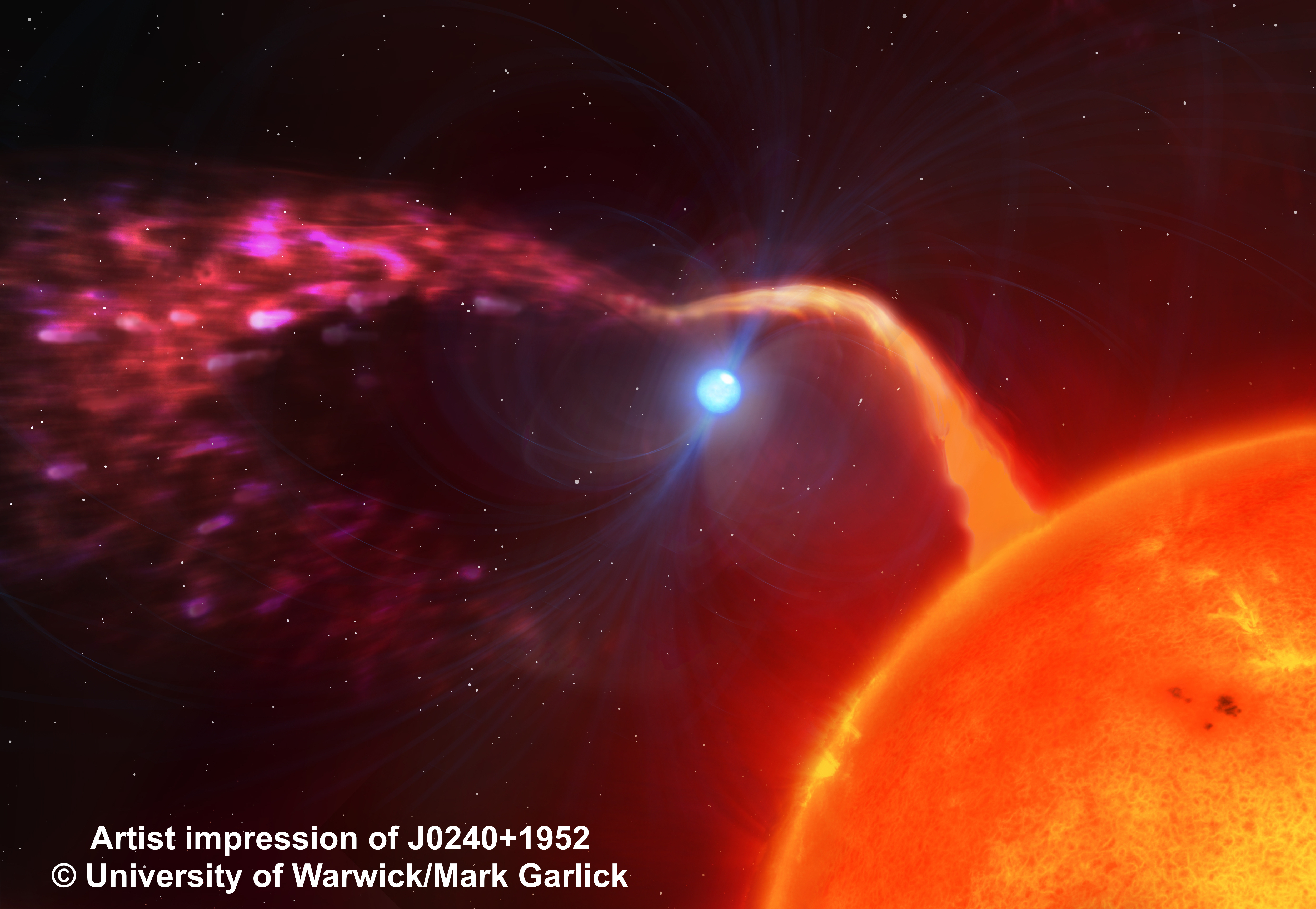
Cataclysmic variables are systems in which a white dwarf accretes mass from a late-type companion via Roche lobe overflow. If the white dwarf is magnetic, the magnetic field can regulate the geometry and rate of accretion, causing distinct observational properties. In particular, the white dwarf's spin period is revealed through photometric variations induced by spots, which result from accretion rate asymmetries caused by the magnetic field. Tracking the rate of spin change can provide insight into the competing effects of accretion and magnetic drag. My team and I use the fast photometers HiPERCAM, ULTRACAM and ULTRASPEC to search for the spin period of the white dwarfs in cataclysmic variables. One of my most remarkable discovery was J024048.51+195226.9, the fastest spinning confirmed white dwarf, which was in a Warwick press release. It was also featured in many news articles, one of my favourite being the one by Phil Plait for SyFy Wire. There is also a YouTube video by SciShow Space. A very special case of cataclysmic variable are white dwarf pulsars. Their classification as cataclysmic variable is actually questionable, as they are detached systems. What makes them special and gives them the name "pulsar" is the fact that they show pulsed emission from radio to X-rays. The period of these pulses is associated with the spin of the white dwarf. The pulsed emission is non-thermal in nature, and atributed to electrons that are accelerated by the white dwarf magnetic field, but the exact details of the emission are unkown. Only three such systems are known. I was responsible for the discovery of the second one, J191213.72-441045.1, as announced in a Warwick press release.
Related works: arXiv:2506.20455, arXiv:2306.09272, arXiv:2306.09732, arXiv:2208.08450, arXiv:2109.00553, arXiv:2108.11396.
Extremely low-mass white dwarf stars
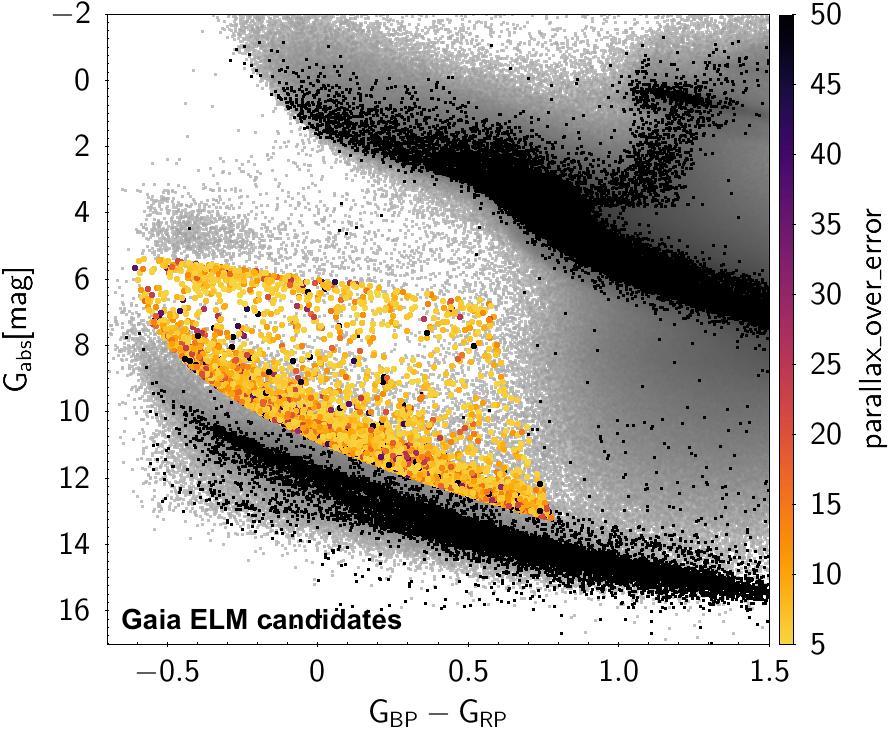
Extremely low-mass white dwarf stars (ELMs) are helium-core white dwarfs with mass below 0.3 solar masses, born either as a result of a common-envelope phase or after a stable Roche-lobe overflow episode in a multiple system. As remnants of binary evolution, ELMs can shed light onto the poorly understood phase of common-envelope evolution and provide constraints to the physics of mass accretion. In addition, most known ELMs will merge in less than a Hubble time, contributing thus to the signal to be detected by upcoming space-based gravitational wave detectors. I have compiled a catalogue of 5762 ELM candidates selected from the data release 2 of Gaia, available here, which my team and I am currently following up in order to identify potential LISA sources, and to compile an unbiased volume-limited sample to serve as benchmark for population synthesis models.
Related works: arXiv:2501.09003, arXiv:1907.03766, arXiv:1805.04070, arXiv:1804.09059, arXiv:1801.00495.
Hot subdwarf stars
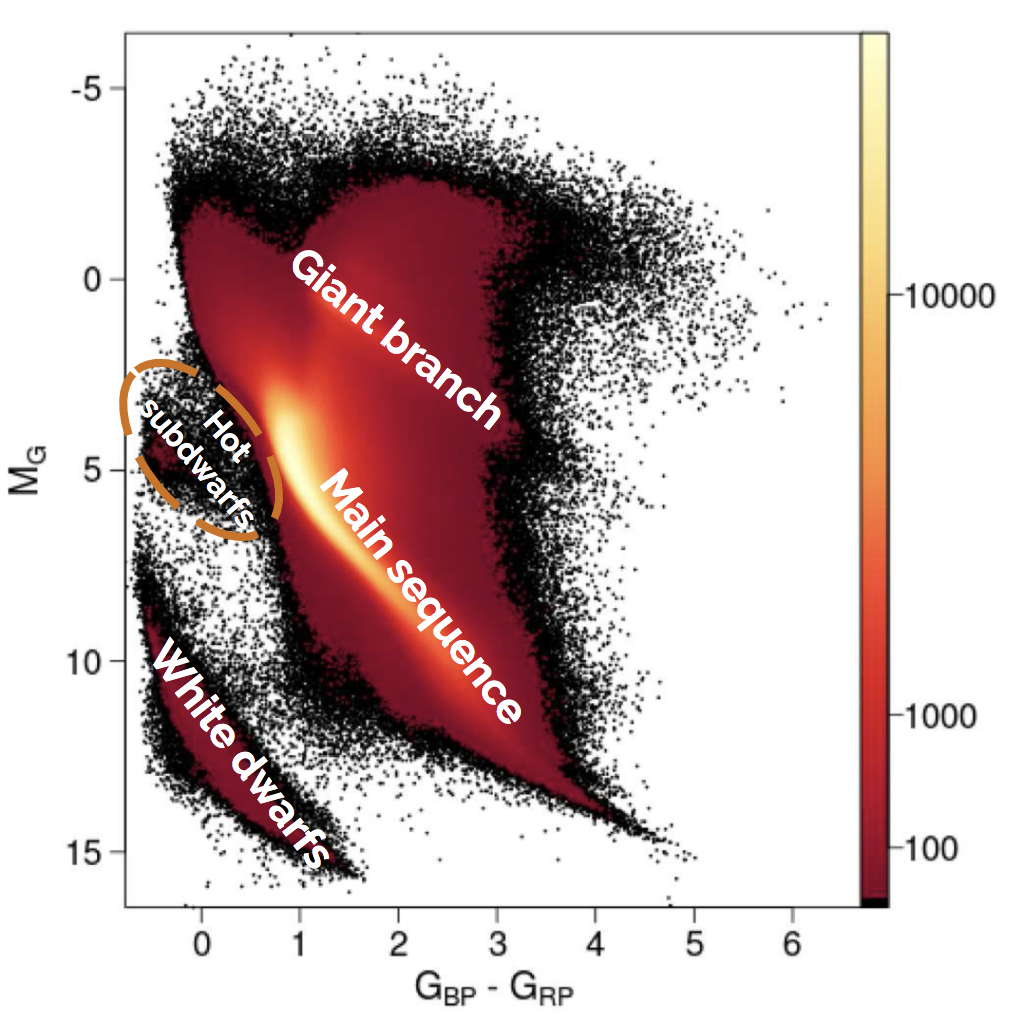
Hot subdwarfs are hydrogen-poor helium-burning stars, typically formed either by removing the envelope from a red giant through binary interaction, or by merging two helium-core white dwarfs. Because of this binary origin, hot subdwarfs play an important role in our understanding of binary evolution. They are potential type Ia supernova progenitors as well as gravitational wave sources. My main contribution to the hot subdwarf field was using Gaia and TESS to provide observational evidence that they require binary interactions to be formed (see arXiv:2008.07522).
Related works: arXiv:2403.15513, arXiv:2111.09873, arXiv:2106.03363, arXiv:2104.03867, arXiv:2008.07522, arXiv:1912.08338.
Properties of the population white dwarf stars

White dwarf stars are the most common end-product of stellar evolution, corresponding to the final observable evolutionary state of over 95 per cent of the stars in the Galaxy. They can show a range of different spectral types depending on their atmosphere composition, temperature, magnetic fields, and on the possible interaction with planetary debris. White dwarfs play an important role in our understanding of the evolution of planets, stars, the Galaxy, and the Universe as a whole. I started working on white dwarfs as a first-year Physics undergraduate student, in 2009. Since then I have contributed to many spectral catalogues using the Sloan Digital Sky Survey (SDSS), which have lead to an eight-fold increse in the number of spectroscopically confirmed white dwarfs. I have also studied their magnetic fields and pulsations.
Related works: arXiv:2210.01608 arXiv:2108.10915, arXiv:2006.00965, arXiv:1909.05555, arXiv:1904.01626, arXiv:1712.07146, arXiv:1510.08409, arXiv:1411.4149, arXiv:1212.1222, arXiv:1211.5709.
Opacities for the H2+ quasi-molecule

During my masters in Astronomy, I developed theoretical work and was able to significantly improve line broadening models for the quasi-molecule H2+, a transient molecule formed in collisions between protons and hydrogen. The energy levels of H2+ are different from the levels of neutral hydrogen, hence its spectrum shows a distinct set of lines. These so-called satellite lines are especially prominent in UV spectra of blue stars, such as white dwarfs, blue horizontal branch stars (BHBs), and λ Bootis stars. The opacity tables are available on VizieR can be easily used with Synspec.
Related work: arXiv:1501.05609.
© 2018 Conjoint. All rights reserved | Design by W3layouts.
